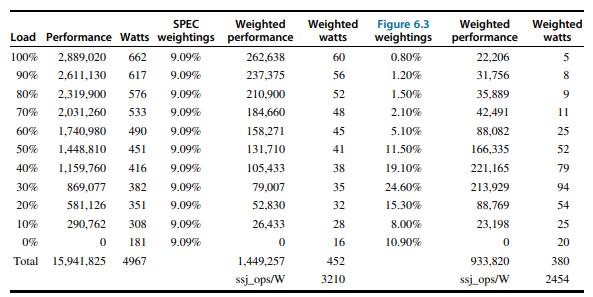Power stranding is a term used to refer to power capacity that is provisioned but not used
Question:
Power stranding is a term used to refer to power capacity that is provisioned but not used in a datacenter. Consider the data presented in Figure 6.37 [Fan, Weber, and Barroso, 2007] for different groups of machines. (Note that what this paper calls a “cluster” is what we have referred to as an “array” in this chapter.)
a. What is the stranded power at (1) the rack level, (2) the power distribution unit level, and (3) the array (cluster) level? What are the trends with oversubscription of power capacity at larger groups of machines?
b. What do you think causes the differences between power stranding at different groups of machines?
c. Consider an array-level collection of machines where the total machines never use more than 72% of the aggregate power (this is sometimes also referred to as the ratio between the peak-of-sum and sum-of-peaks usage). Using the cost model in the case study, compute the cost savings from comparing a datacenter provisioned for peak capacity and one provisioned for actual use.
d. Assume that the datacenter designer chose to include additional servers at the array level to take advantage of the stranded power. Using the example configuration and assumptions in part (a), compute how manymore servers can now be included in the warehouse-scale computer for the same total power provisioning.
e. What is needed to make the optimization of part
(d) work in a real-world deployment?
Figure 6.37:

f. Two kinds of policies can be envisioned to manage power caps [Ranganathan et al., 2006]: (1) preemptive policies where power budgets are predetermined (“don’t assume you can use more power; ask before you do!”) or (2) reactive policies where power budgets are throttled in the event of a power budget violation (“use as much power as needed until told you can’t!”). Discuss the trade-offs between these approaches and when you would use each type.
g. What happens to the total stranded power if systems become more energy-proportional (assume workloads similar to that of Figure 6.4)?
Figure 6.4:

Step by Step Answer:

Computer Architecture A Quantitative Approach
ISBN: 9780128119051
6th Edition
Authors: John L. Hennessy, David A. Patterson





